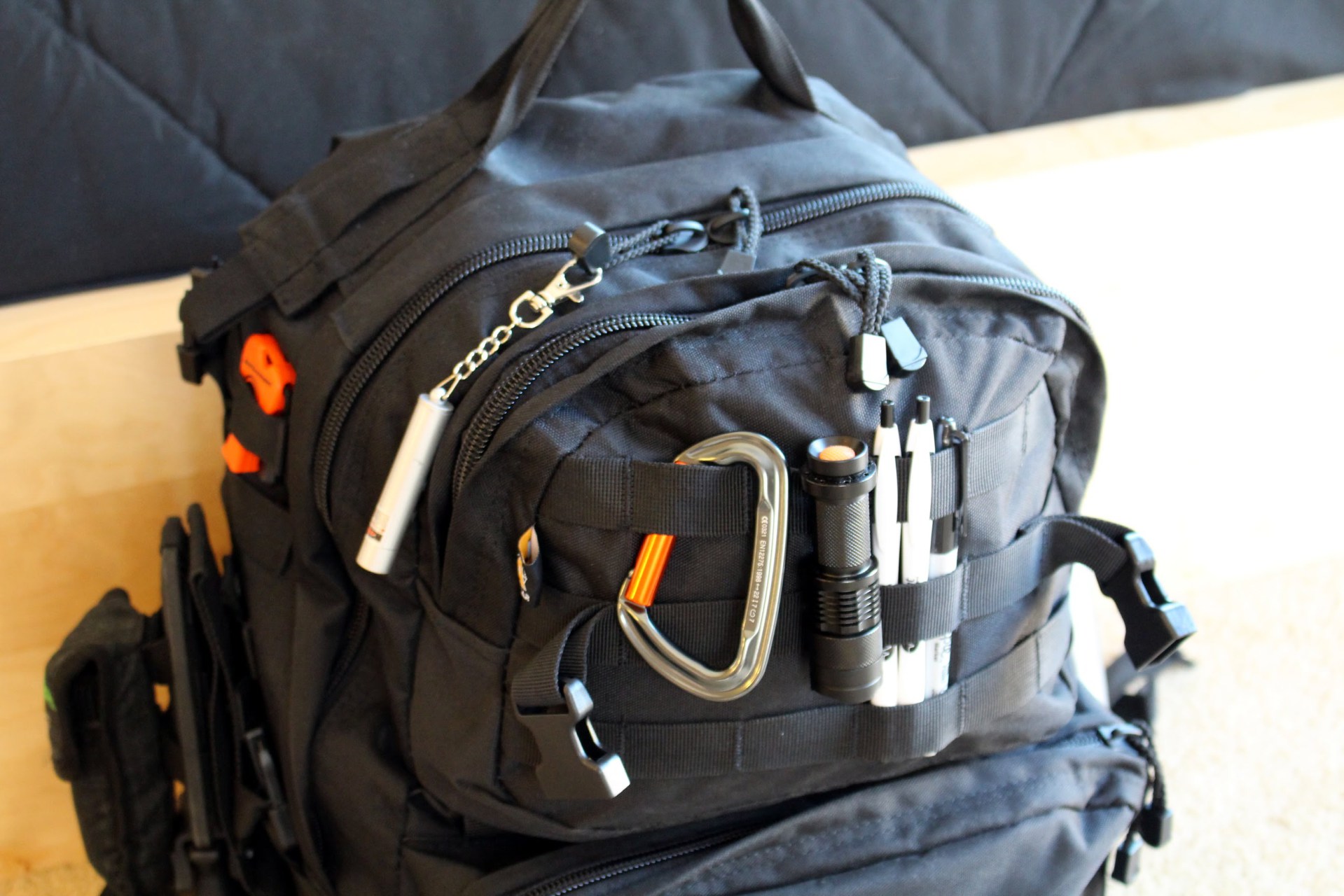Apart from your basic survival equipment, the bag you store that stuff in is vitally important.
Here are a few things to consider before you make your next purchase or designate a bag for a survival purpose.
Lightweight: The importance of an emergency bag’s weight cannot be over-stressed. You don’t know how long you’ll be carrying it around, so you need something which is lightweight and thus will not hinder your movement.
Subtle is Best: Your bag should not be screaming, “Look at me!” Black works perfectly because it is not visible at night, and also it does not draw attention to itself. In an emergency situation, you do not want people to focus on your gear and blending in with the surroundings is your best bet.
Waterproof: Make sure your bag is waterproof. After all, you do not want all your supplies to get wet when it rains or snows.
Size: Don’t go for something which is too big. Again, it draws too much attention to itself and you might find yourself in trouble as people try to rob you thinking you have a ton of supplies in there. Also, the larger the size, the more difficult it will be to carry the bag.
Durability: The bag you buy should be built to withstand the elements. If a zip breaks, or a strap tears, you will be in huge trouble. Never compromise on the durability of a bag, even if you need to spend more. The fabric of the bag should also be tough.
Compartments: Bags which have many zippered compartments are easy to handle as you can organize your goods. That way, whenever you need anything, you do not have to turn all the contents topsy-turvy to find it.
Comfort Level: Your emergency bag is something you will be wearing for extended periods of time, as in a bug out situation you will constantly be on the move.
Before you purchase your bag, wear it to see if it adjusts well to your body shape and structure. The straps should be adjustable and comfortable; they should not dig into your shoulders and waist. The bag should lie comfortably across your back and not bounce around too much when you move.
Types of Bags
Go Bag or 72- Hours Bag
This bag will sustain you for three days, and is best used in case of a natural disaster, when help might be on the way.
Car Bag
This kind of bag is meant for people who travel via car a lot. The bag will have tools and supplies to repair your car, like a jumper cable and tire repair tools, so if you are stranded on the road, you can fix your vehicle and get going.
Bug Out Bag
A bug out bag is something which will sustain you for a long time. This bag is meant to carry supplies which will help you survive in any dangerous situation.
The bag not only has food and water, it also has supplies which will help you make it on your own in the wilderness.
Duffel Bag
A duffel bag can be used as an emergency bag if you have nothing else at hand. It is spacious and large and thus you can fit a lot of your gear inside. However, keep in mind that it is not the ideal option.
Unless you plan on “bugging-in,” your survival bag is one of the most important purchases you will make as you build your survival cache.
Get the wrong bag and you will find yourself, miserable, stressed, ill-equipped or all three.
By using the above as a guide, though, you put yourself ahead in the game; to see more points on selecting superlative survival bags, check out The Prepper Journal.
Featured Image via The Prepper Journal

Yeah, I’m not to sure I’m in complete agreement here. For starters it claims light weight is a primary consideration. I might agree that San unnecessarily heavy bag is undesireable but weight generally is associated with durability which is another important consideration in a bag that outweighs light weight. The good zippers and more durable cloth weigh more than what “light weight” bags generally supply. Also, aside from an outright “dry bag” which in my experience is other than comfortable to carry as they’re usually frameless, I’ve yet to encounter a “waterproof” pack. It’s good to have a pack cover which helps keep things dry but is no guarantee, especially if they’ve seen much use but the way to keep things that must stay dry is to pack them in their own individual dry container or bags. I’m certainly not going to depend on the water resistance of my pack to ensure the toilet paper stays dry. That is the recipe for wet, useless toilet paper. The same goes for extra clothes, fire making stuff, 1st aid kits etc. Planning on your pack keeping all that dry is the same as planning on wet gear. Better to ensure your pack has good drainage so when, not if you get water in your pack, it has a way out.
“New Bug Out Bag”. Who the$#%&!@*is wearing out a run-away-emergency-probably-never-use-more-than-once bag? Or are you fucking collecting them so that when you do finally decide it’s time to run for the hills you can slowly lurch your way through the wilderness looking like a cosplayer of the hunchbacked junk goblin lady thing from Labyrinth?$#%&!@*off, wankers.
Mike Coonfield